

















































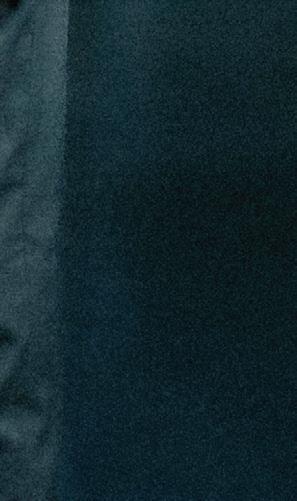
















































































Marc
Brian
Mark
Roger
















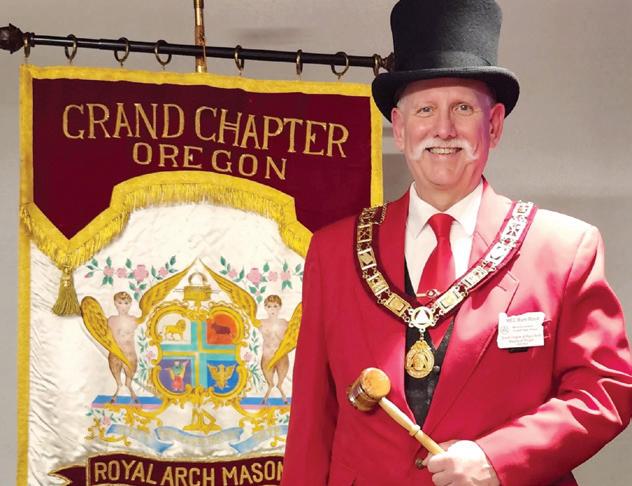












This season has been full of activity with Official Visits and special events. Thank you, Brothers, for sharing your passion for Oregon Freemasonry. Passion is what drives us—whether it’s for the Craft , our families, a favorite hobby, or a skill we enjoy sharing with others.
Recently, I’ve witnessed some outstanding Degree work. It’s inspiring to see how much passion shines through when a Brother delivers ritual with confidence and care. There’s a world of difference between reading words and truly bringing them to life. When Degrees are delivered with meaning, when the Lodge is full, and when everyone is dressed with pride, the candidate feels the impact—and so do we.
But passion isn’t only shown in ritual. It’s also in the many talents we share with one another. Some Brothers are golfers, cooks, woodworkers, musicians, hunters, writers, or gardeners. Others may be drawn to fishing, cycling, motorcycling, or even the quiet art of birdwatching. The list is endless, and each interest adds depth to the brotherhood we share.



When we take time to learn about each other beyond Lodge walls, we discover just how diverse and gifted our Craft truly is. Every conversation, every shared skill, and every moment of fellowship deepens our bonds. By asking simple questions and showing genuine interest, we see the whole person behind the apron—the Brother, the friend, the man. So let us continue to share our passions, both inside and outside the Lodge. In doing so, we strengthen our connections and build a Brotherhood that is as vibrant and meaningful as the lives we each lead.










Sincerely and Fraternally,

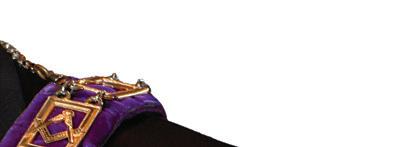





Marc L. Strong Grand Master 2025-2026



























By W.B. Adam M. Bayer






there are Brothers among us who remember a time when a man was almost always dressed in a suit and tie. Whether it was for work, at a restaurant, his house of worship, or even his child’s school play, it was unspoken etiquette that he would present himself with a certain level of propriety. Naturally, that expectancy carried over into his Masonic Lodge, where it was even more likely that a tuxedo was de rigueur.

My favorite Masonic accessory is an antique Masonic pocketknife that was handed down to me by an Oregon Mason. It is intricately inlaid with the Working Tools of our Craft , and is small enough to be worn as a watch fob or accessory. The Brother who gifted it to me recieved it himself from a fellow Mason.
I think it’s important for us to pass along cherished items rather than hoard them or tuck them away to be forgotten, lest they may, upon our death, be donated to a thrift store or even disposed of.
- Adam M. Bayer
Over time, as social mores have relaxed, so has the requirement that men adhere to the formality of what feels like the distant past. Th is easing of the rules has naturally reflected upon how we dress as Masons. And though it is true that a Byzantine cathedral is no more holy than a clapboard chapel, and we are taught that Masonry regards no man for his worldly wealth, remember that our Lodges are sacred spaces which are owed a certain level of reverence. When it comes to Degree work, decorum of dress can be just as impactful as the allegory of our ritual to the candidate upon being brought to light.
Th is is not to say that casual attire has no place in Lodge, but rather to consider the context of the event in question: a summer Stated Communication on a hot, July evening; an installation of officers; a Master Mason Degree; an Official Visit by the Grand Master. Each of these necessitate its own level of decorum befitting to the occasion. Inversely, to arrive overdressed can be equally off-putting to your Brethren, appearing contrary to the notion of meeting on the level. One solution is for the Worshipful Master, in January, to address his expectations for the year’s dress code; thus, avoiding any misunderstanding, and maintaining both the harmony of the Lodge and the reverence that is due to our fair Craft .
Several Lodges in our jurisdiction employ officer uniforms each year which reinforce a sense of continuity and pride, oftentimes with something as simple as a pin or tie clip. Masonic accessories in general are a great way to bring thoughtful details to
















"Wearing an appropriate attire is important as it maintains the dignity and formal atmosphere appropriate for our Degrees and Stated Meetings."
-
your in-Lodge ensemble, and can be paired with any outfit, regardless of style. Again, by leveraging the context of the evening, your choice of flair can be especially poignant: a pair of Masonic cuffl inks or ring passed down from a family member; your 50-Year jewel at an Entered Apprentice Degree; your Hiram Award medal at an election or installation of officers; the Grand Master’s tie or pin for his Official Visit. The richness of our fraternity is built on the stories of its members and their Lodges.



























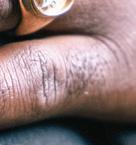

















R.W.B. Brian S. Jenkins, District Deputy No. 9






Freemasonry has always been rich in tradition, symbolism, and the honoring of those who came before us. At Rickreall Lodge No. 110, one of the most anticipated and unique traditions is the annual Past Master’s Night, which is held in conjunction with the official visit of the Grand Master of Masons in Oregon.







For decades, this event has carried a lighthearted yet meaningful custom that sets it apart. On this night, the members of Rickreall Lodge trade their usual formal attire for bib overalls and a “sacrificial” necktie. The tie, offered in good spirit, is ceremonially cut during the evening as part of fundraising efforts that benefit the Lodge's charitable work.


Adding to the character of the evening, members also don burlap aprons in place of their standard regalia. Th is playful substitution pays homage to the farmers, laborers, and working men who originally chartered Rickreall Lodge in 1893. The gesture serves as a reminder of the humble beginnings of both the Lodge and the surrounding community.
While Rickreall Lodge is well known for this custom, other Lodges across Oregon have also embraced similar ideas, adopting bib overalls for specific events or themed nights. In doing so, they carry forward the spirit of creativity, fellowship, and respect for heritage that has long been a hallmark of our Fraternity.
The atmosphere of the evening is one of fellowship, fun, and reverence for tradition. It demonstrates how Masonry can honor its past while engaging its members in ways that build bonds and strengthen brotherhood. What began as a local Lodge custom has now become an admired part of Oregon Masonry’s rich tapestry of traditions.
Rickreall Lodge No. 110 is proud to continue this legacy, reminding us all that while Freemasonry is serious in its values and teachings, it is also strengthened by moments of joy, laughter, and the shared remembrance of those who came before us.

Learn how millennials view Freemasonry and how to bridge the gap between current Masons and the next generation through new Scottish Rite, NMJ research.
The lessons, values, and traditions of Freemasonry have been passed from generation to generation for nearly three centuries. Indeed, reverence for this history is a critical part of joining the Craft, and we treat the men who came before us with the utmost respect. However, if we intend to grow our fraternity for generations to come, we must look to the future and focus our efforts on bringing in new Masons who can carry us forward.
Millennials, sometimes known as Generation Y, are those who were born between 1981 and 1996. Today they are the largest generation group in the United States, comprising over 20% of all Americans, and our research tells us they are the primary group interested in Freemasonry.
With this knowledge, it is important to understand the best way to reach and connect with these men. Based on evidence-backed data from our newest study, we’ve outlined the top four critical things to know about this generation and how you can best utilize this information to attract new Brothers.
In 2023, the Scottish Rite, NMJ completed comprehensive research that explored how the Craft appeals to men today
and revealed why Freemasonry is well-positioned for longterm growth.
Through that research, we discovered an impossible-toignore generational shift in Freemasonry’s demographic, with millennials now the primary target for membership. The data shows that 77% – nearly eight in ten – of millennial men expressed interest in joining our brotherhood once they learned more about it. That’s more than any other generation in the country.
Modern societal influences and their life stage are calling millennials to the tenets and values of the Craft in a way they haven’t before. Research shows loyalty, equality, and responsibility are the strongest values among this demographic. As Freemasons, these values are central to how we conduct ourselves each day. Millennial men naming these as their primary values is a clear indicator they are predisposed to find and join Freemasonry as an option for fulfillment.
Furthermore, as millennials progress through their everyday lives and professional journeys, they have more time to seek meaningful experiences. Their desire to contribute to society and put their skills to good use aligns perfectly with Freemasonry’s message of helping those most vulnerable.
There is a “loneliness epidemic” in the United States that is well documented. Our own study shows that over one in four men (27%) identify as lonely. The traditional methods for men to make social connections are eroding, as there is less religious involvement, lower marriage rates, and an increase in remote working. All of this contributes to a drastic increase in disconnection, particularly among single men.
One striking statistic reveals that one in five unmarried and non-romantically involved American men confess to lacking close friends. For those with three or fewer close friends, feelings of loneliness and isolation are quite common, with over half admitting to experiencing these emotions at least once in the seven days before the survey. Given this trend, it should be no surprise that the men we surveyed reported a significant desire to join local groups, with millennials showing the most interest.
Freemasonry has an uncanny ability to provide relief to the loneliness epidemic. As we consider the desire for connection and combine it with the aligned moral and ethical values between millennials and Freemasons, it further proves the opportunity is ripe for the Craft to expand with this rising generation.
that lodges are not doing enough to welcome new Masons. Whether this is due to time, effort, resources, or know-how, the fraternity must do better if we hope to keep the light of the Craft glowing for future generations.
No matter the reason Freemasonry has struggled to grow in the modern era, we know the remedy is two-fold:
1. We need to follow up with interested men
Since BeAFreemason.org was built through a collaborative effort between the Scottish Rite, NMJ, the Southern Jurisdiction, and Shriner’s International, more than 100,000 men have inquired specifically about how to join. Of those men, 83% never heard back from a Lodge or Grand Lodge after submitting an inquiry.



In other words, when it comes time for a Grand Lodge or local Lodge to take over bringing in these men to the Craft, more often than not, they don’t. More direct follow-up and subsequent accountability by those responsible for members must be prioritized in Freemasonry across the country.
The good news is that despite the lack of follow-up, 98% of these men surveyed are still interested in becoming a Freemason. We have a huge opportunity to bring in new members by simply following up with these men. If we can achieve this, we will ensure Freemasonry continues to thrive.
The overwhelming majority of millennials use social media. 93% are on these platforms, and 86% use them every day. Why is this important?
Whatever our personal feelings about social media and the internet are, the fact that millennials use it to such an overwhelming extent teaches us how they connect, learn, and navigate life. For us to continue Freemasonry’s traditions in the years to come, we must recognize the importance and validity of digital outreach. That is to say that only by reaching our target audience where they are – and for millennials that means going online – can we expect to attract new members to our brotherhood.
We have seen successful marketing and research that confirms there is a strong interest in Freemasonry. Despite this, decades of stagnant membership growth indicate
2. We need to think differently about online prospects
Historically, prospects who inquire to join through an online query have been viewed as “spam” or deemed less worthy of membership. Although unintentional, some lodges maintain the perception that men who inquire online won’t meet their standards for membership.
As we can see from the data above, the vast majority of millennials are active on social media and the internet. For them, it is completely normal to try to join a membership organization digitally.
It’s up to us to change our perception of digital prospects. This begins by taking the time to kindly explain to Brethren why digital recruitment and follow-up are worthwhile. If we can implement systems to encourage initiative, transparency, and accountability, we can unite Masons to support the growth of our Brotherhood.
By W.B. Mark Reed, Senior Grand Deacon

When I fi rst became a Master Mason, I was immediately invited to join the York Rite. For over a year, I said no. My reasoning was simple: I needed to fully understand what it meant to be a Mason in my Blue Lodge before pursuing more.
During that time, I carefully observed the York Rite Masons I knew. I listened to their conversations— not just about degrees and orders, but about their experiences. What struck me most wasn’t the ritual or the structure. It was their enthusiasm. I heard comments like, “I wish I had joined 20 years sooner,” “You meet such great Masons,” and “The fellowship is second to none.” Those words stayed with me.
Later, when I had the honor of serving as the Most Illustrious Grand Master of the Grand Council of Cryptic Masons of Oregon, my theme was enthusiasm. The defi nition I like best is: a feeling of energetic interest in a particular subject or activity and an eagerness to be involved in it. That was exactly what I saw in York Rite Masons—true, infectious enthusiasm for the Craft and for one another.
That spirit is what fi nally moved me to join. Yes, the York Rite’s teachings—the search for the Lost Word in the Royal Arch, the preservation of it in Cryptic Masonry, and the solemn lessons of the Knights Templar—were important to me. But the deeper reason was that I wanted to be part of the same joy and passion I saw shining in my companions’ eyes.
Along the way, I discovered something else. In some parts of the world, one is not considered a complete Master Mason until receiving the Royal Arch Degree. As a Mason who enjoys traveling, I wanted to experience that fullness of the Craft .
Today, I can say joining the York Rite has been one of the best decisions of my Masonic journey. I’ve met Companions and Sir Knights across Oregon and the nation—men who are now lifelong friends.


If there’s one lesson I carry with me, it’s this: enthusiasm is the heartbeat of Freemasonry. It drives interest, inspires growth, and deepens bonds. Yes, it takes effort to stay positive and push through challenges, but it is always worth it.


By
As you turn off the highway at Tree Top and the pavement gives way to gravel, the anticipation builds. You ease along, careful not to kick up dust for those behind you.
Perhaps you’ve made this journey before. Perhaps it’s your fi rst time. Or maybe it’s been years since you last traveled the winding road to the Malheur Cave. Some have been so often that the novelty has dimmed—yet when the Worshipful Master of Robert Burns Lodge No. 97 asks, “Who is here for their fi rst Cave Degree?” dozens of hands still rise, year after year. And so, the tradition carries on.
Memories are made, friendships renewed, meals shared, games played, and stories told. In the quiet moments, many pause to take in the vast sweep of the high desert.
The Cave itself is modest, even hidden. Yet what surrounds

it—and what it represents—is so much larger. The Cave is a symbol, but Freemasonry is the substance. Each of us had a reason for becoming a Mason, for attending our fi rst Cave Degree, or for returning for the twenty-fi ft h anniversary.
Th is year’s 84th Conferral of the Master Mason Degree was Masonry in full effect. But it’s worth remembering— Masonry is alive the other 364 days of the year too. Each day offers a chance to live by our principles, to set an example, and to show the strength of our Brotherhood.
As we left the high desert behind and returned home, we carried with us the joy of fellowship and the pride of our Craft . Until we gather again: blessings, hugs, and good thoughts to you and yours, my Brothers. Long days and pleasant nights.

W.B. Dale B. Palileo, Grand Lecturer
As Masons, we know that our Craft is built upon layers of symbolism and allegory, and few symbols are as central to our journey as the working tools presented in each Degree. Originally used by operative masons to build great cathedrals and temples, these tools now serve as symbols for the internal, personal labor we undertake as speculative Masons. When we examine the tools of the Entered Apprentice, Fellowcraft, and Master Mason degrees side by side, a deeper pattern begins to emerge, one that speaks to our progression through personal development, moral living, and collective unity.
The Entered Apprentice is introduced to the 24-inch gauge and the common gavel—simple tools, yet rich in meaning. They ask us to consider: How are we managing our time? What are we doing with the hours we’ve been given?
The 24-inch gauge teaches us to divide our day into proper portions: eight hours for labor, eight for rest and refreshment, and eight for the service of God and Brothers. But beyond time management, it calls for thoughtful prioritization. Are we creating space in our lives for improvement, for spiritual pursuits, for meaningful connections? The 24-inch gauge invites us to take honest stock of how we spend our time.
The common gavel symbolizes the removal of the rough edges of our character. What are the habits, thoughts, or behaviors we carry that no longer serve us—or worse, hold us back? This tool reminds us that self-refinement isn’t a one-time act, but an ongoing process of chipping away what doesn’t belong.
Finally, the Master Mason is entrusted with the trowel—a tool not for the individual, but for the collective. At this stage, we must ask ourselves: What am I building with my Brothers? Am I a unifying force or a dividing one?
The trowel spreads the cement of brotherly love and affection, binding Masons together. It’s a call to move from individual effort and moral action to cooperative unity. The lessons of the earlier Degrees have prepared us for this moment, not to stand alone, but to stand together.
By reflecting on the interconnection of these tools, we not only understand Freemasonry better—we live it more fully.
Together, these tools encourage us to lay the foundation for everything that follows. Before we can effectively serve others or build something greater, we must first be willing to do the internal work.
Advancing to the Fellowcraft Degree, the focus begins to shift outward. With the plumb, square, and level, the Fellowcraft is asked to consider: How do I interact with others? Do my words and actions reflect the values I claim to uphold?
The plumb teaches uprightness—living a life of integrity and moral consistency. The square instructs us in fairness and virtue, shaping our dealings with others in the same way it shapes stones to fit their intended place. And the level reminds us that we meet upon the level—as equals, bound not by titles or wealth, but by mutual respect and shared purpose. These tools aren’t abstract ideals; they are practical guides for daily living. They challenge us to extend the work we began in the first degree and apply it to our relationships, decisions, and responsibilities. If we reflect honestly, are we living squarely? Are we standing upright in all things? Are we honoring the level upon which we meet?
“Who best can work and best agree” isn’t just a phrase, it’s a challenge. It urges us to rise above personal differences and work harmoniously toward the common good. This Degree reminds us that unity doesn’t happen by accident; it must be built, one relationship at a time, with care, patience, and intentional effort.
Taken together, the working tools of the three Degrees form a progression:
1. Self-discipline and reflection (Entered Apprentice)
2. Moral action and how we treat others (Fellowcraft)
3. Unity and shared purpose (Master Mason)
But this journey is not linear; it’s cyclical and ongoing. One cannot wield the trowel effectively without first mastering the gauge, the gavel, the square, and the level. And even as we work toward unity, we’re constantly called back to refine ourselves and renew our commitment to uprightness and fairness.
So ask yourself: Where am I on this path? Which tools am I actively using, and which have I set aside? What can I do today to build more intentionally—within myself, within my Lodge, and within the world around me?
The working tools of Freemasonry are more than ceremonial symbols; they are invitations. When taken to heart and put into practice, they can transform how we live, how we serve, and how we build. The journey from Entered Apprentice to Master Mason is one of increasing responsibility, deepening insight, and broader purpose.
By reflecting on the interconnection of these tools, we not only understand Freemasonry better—we live it more fully.

Lodges across Oregon are strengthening their communities through a wide range of charitable projects and partnerships. Their efforts span education, youth programs, veterans, and community service—showing Masonry in action every day.
Education & Scholarships
Multnomah No. 1
Wasco No. 15
Ashland No. 23
Scio No. 39
East Linn No. 44
Cottage Grove No. 51
Tillamook No. 57
South Umpqua No. 72
Heppner No. 69
Robert Burns No. 97
Florence No. 107
Milwaukie Waluga No. 109
Rickreall No. 110
Sidney Croft No. 206
Youth & Community Programs
Salem No. 4, Belt No. 18, Heppner No. 69
Veterans
Salem No. 4, St. Helens No. 32
Community Partnerships
Florence No. 107, Sidney Croft No. 206










On August 14, members of the Oregon Masonic Charitable Foundation (OMCF) visited the new SMART Reading facility in Northeast Portland to present a $50,000 donation—the second year supporting its mission. SMART refurbishes books and provides them to children across Oregon, ensuring every child has the joy of reading at home.
If you would be interested in volunteering as a reader or helping clean and refurbish books, go to www.smartreading.org. Th is is a great opportunity to help your Lodge achieve the Public Schools Award as well as possibly the Grand Master’s Achievement Award.
A donation from your Lodge to SMART Reading would be eligible for reimbursement via Creating A Partnership program and be another great way to become involved with your local community.
Oregon Freemasons can be proud to partner with a program that supports early childhood reading and shares so much with early readers of Oregon.




Join us for an unforgett able Masonic journey to our nation’s capital from April 26 – May 1, 2026. Reserve your spot early — space is limited!







Pearl Lodge No. 66 in Turner celebrated its 150th anniversary this year with a memorable evening of fellowship, history, and tradition. Worshipful Master Mike Thomas, who has eagerly anticipated this milestone all year, welcomed M.W.B. Marc Strong and the Grand Lodge Officers to join in the celebration.
Festivities began with a hearty barbecue meal, followed by the solemn Corn, Wine, and Oil Ceremony. W.B. Thomas then shared the story behind the name “Pearl,” and M.W.B. McMillan reflected on the Lodge’s journey from its early days in 1875 to the present.
Originally formed in 1874 UD and consecrated in 1875, Pearl Lodge has experienced many changes over its century and a half. Today, it resides in its second home—just across the street from the original Lodge building, erected in 1887 for $1,205.
The Brothers of Pearl Lodge extend heartfelt thanks to the many Lodges and Brethren who have supported them through the years and who joined in celebrating this special night.

W.B. Jack Weaver of Fairview Lodge No. 92 traveled to Eagle Point, Ore., to present W.B. Kenneth A. Olson with his 50-Year Jewel.
A Past Master of Bridal Veil Lodge No. 117 from 1979 to 1980, W.B. Olson enjoyed a career as an engineer, reserve police officer, and later bailiff before retiring. He and his wife, Barbara, met in Japan—he with the Corps of Engineers, she teaching—and later made their home in Eagle Point. Both remain active and well-traveled.
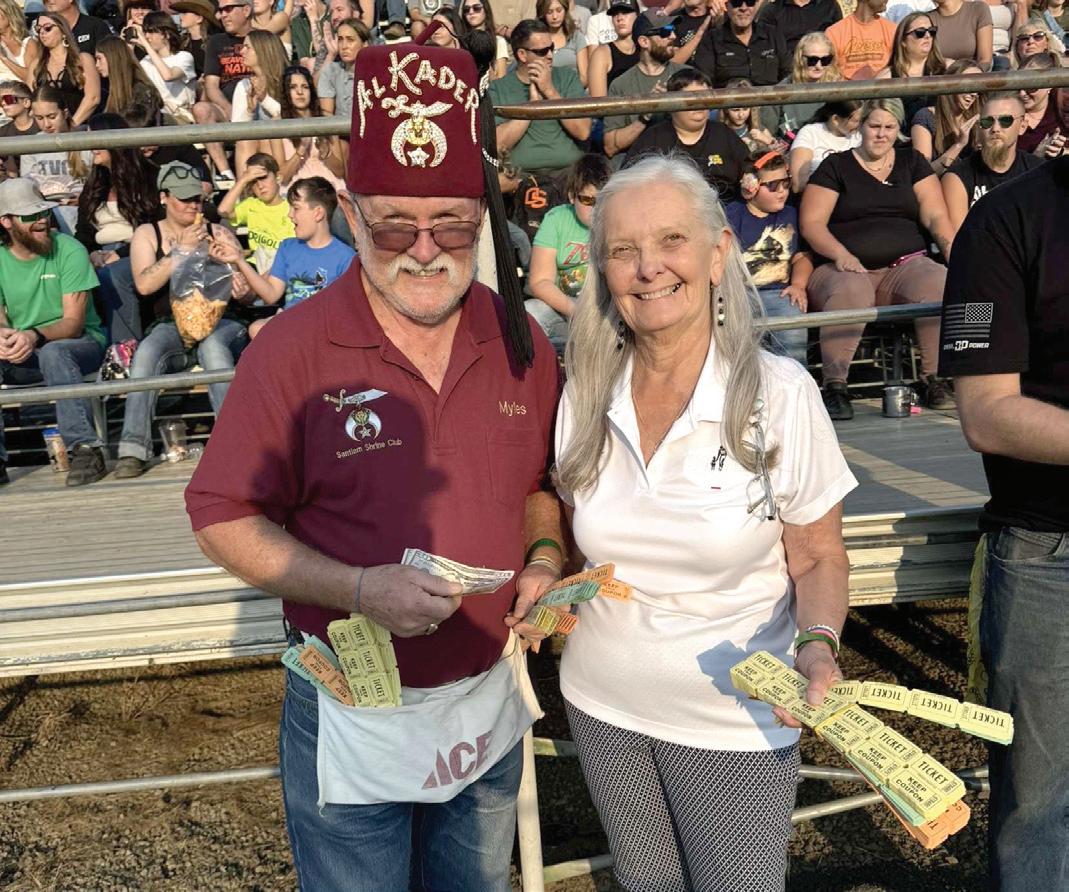
The Al Kader Shriners were at the Sublimity Harvest Festival on Saturday, Sept. 6 in Sublimity, Ore. The 50/50 raffle raised $3,900. It was a great day of Masonic presence in the community.
e Grand Lodge of A.F. & A.M. of Oregon
2150 Masonic Way
Forest Grove, OR 97116
Change service requested

In September 2026, the Grand Lodge of Oregon marks its 175th anniversary—a milestone worth celebrating across the state.
GRAND LODGE
Contact Marketing Director Marissa Douglas at mdouglas@oregonfreemasonry.com. Stay tuned for more information! of
Along in Forest on events . Big or small, public or private, each fellowship,
Along with the official event in Forest Grove on September 12, 2026, Lodges are encouraged to host district events between August–October. Big or small, public or private, each event is a chance to honor our history, strengthen fellowship, and showcase Freemasonry’s impact in Oregon communities.
Planning an event?
Up to $1,000 Reimbursement for Eligible Costs Promotional Signage & Commemorative Materials Press Release Template & Digital Graphics
Let’s make the 175th anniversary unforgettable—together!

